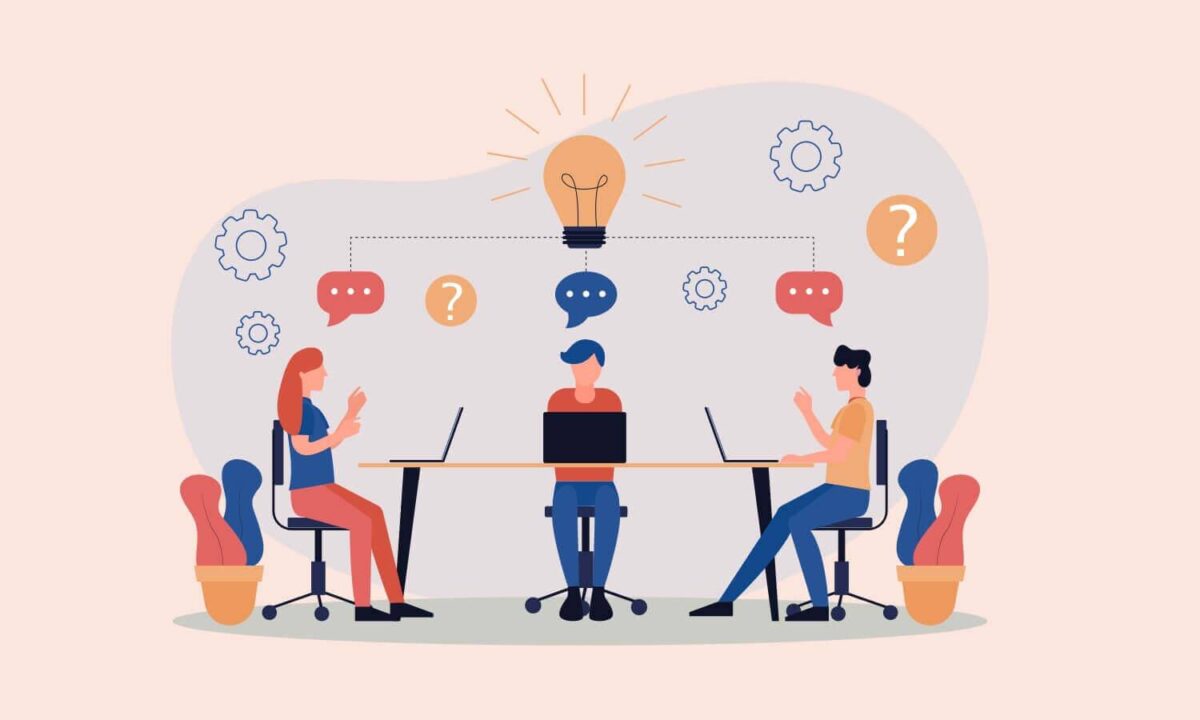Table of Contents
What is Team Engagement?
Team Engagement is defined as o the level of enthusiasm, commitment, and motivation that team members have toward their work and their organization. It’s a crucial aspect of organizational success and productivity. Here’s an overview of what it usually entails:
- Communication: Open and effective communication is key to engagement. Team members who are engaged are more likely to share ideas, provide feedback, and collaborate with one another.
- Motivation: Motivated employees are driven to achieve their highest level of performance. They take initiative, show enthusiasm for their tasks, and are more likely to seek out ways to improve processes and outcomes.
- Recognition and Feedback: Regular recognition and constructive feedback contribute to team engagement. When team members feel their contributions are valued, they are more inclined to remain engaged and motivated.
- Job Satisfaction: Engaged teams are generally more satisfied with their roles and the work environment. They find meaning and purpose in their tasks, which enhances their overall satisfaction.
- Development Opportunities: Providing opportunities for professional growth and skill development is vital. Engaged employees often seek and appreciate chances to learn and advance within the organization.
- Work Environment: A positive and supportive work environment enhances engagement. This includes having a healthy work-life balance, strong team dynamics, and a culture of respect and support.
- Emotional Connection: Team members feel a strong emotional bond with their work and the organization. This connection drives them to go beyond basic job requirements and contribute actively.
Effective team engagement leads to increased productivity, higher employee retention, and a more cohesive and motivated workforce.
Team Engagement Model
A Team Engagement Model outlines the factors that contribute to team engagement and provides a framework for enhancing it. Here’s a common approach to developing such a model:
1. Purpose and Vision
- Clarity of Goals: Ensure that team members understand and align with the organization’s goals and their role in achieving them.
- Meaningful Work: Help team members see the impact of their work and how it contributes to the larger mission of the organization.
2. Leadership and Management
- Supportive Leadership: Leaders should provide guidance, support, and resources while also encouraging autonomy and ownership.
- Effective Communication: Open and transparent communication channels foster trust and engagement.
3. Recognition and Reward
- Regular Acknowledgment: Recognize and celebrate individual and team achievements to boost morale and motivation.
- Fair Compensation: Ensure that rewards and recognition are aligned with performance and contributions.
4. Development and Growth
- Training Opportunities: Provide access to professional development and skill-building opportunities.
- Career Pathways: Offer clear paths for advancement and growth within the organization.
5. Team Dynamics
- Collaboration and Teamwork: Foster a collaborative environment where team members work together and support one another.
- Conflict Resolution: Resolve conflicts quickly and constructively to ensure a positive team dynamic.
6. Work Environment
- Healthy Work-Life Balance: Encourage practices that support a balanced lifestyle, reducing burnout and enhancing overall well-being.
- Physical and Psychological Safety: Create a work environment that is both physically safe and emotionally supportive.
7. Feedback and Improvement
- Continuous Feedback: Implement regular feedback mechanisms to help team members improve and feel valued.
- Engagement Surveys: Use surveys and assessments to gauge engagement levels and identify areas for improvement.
8. Empowerment and Autonomy
- Decision-Making Authority: Allow team members to take ownership of their tasks and make decisions related to their work.
- Innovation and Creativity: Encourage and support innovative thinking and problem-solving.
9. Team Cohesion
- Shared Values: Promote a shared set of values and norms that align with the organization’s culture.
- Team-Building Activities: Participate in activities that enhance connections and foster trust within the team.
By focusing on these key areas, organizations can develop a comprehensive Team Engagement Model that enhances employee satisfaction, productivity, and overall success.
Team Engagement Strategy
A Team Engagement Strategy is a comprehensive plan designed to foster high levels of engagement among team members. It involves implementing specific practices and initiatives to enhance motivation, satisfaction, and commitment. Here’s a structured approach to developing an effective Team Engagement Strategy:
1. Define Objectives and Goals
- Set Clear Goals: Identify what you want to achieve with your engagement strategy, such as improving productivity, reducing turnover, or enhancing team morale.
- Align with Organizational Goals: Ensure that your engagement objectives support the broader goals of the organization.
2. Understand Your Team
- Conduct Surveys and Assessments: Use tools like engagement surveys and feedback forms to understand current levels of engagement and areas for improvement.
- Analyze Data: Review survey results and feedback to identify patterns and specific needs within your team.
3. Develop an Action Plan
- Identify Key Areas: Focus on the core elements that impact engagement, such as communication, recognition, development, and work environment.
- Create Specific Initiatives: Develop targeted actions for each key area. For example, if communication is a concern, implement regular team meetings or updates.
4. Leadership and Management Involvement
- Train Leaders: Ensure that managers and team leaders are equipped with the skills to effectively engage their teams.
- Promote Supportive Leadership: Encourage leaders to actively support and motivate their team members.
5. Communication
- Establish Open Channels: Create opportunities for transparent and two-way communication between team members and management.
- Provide Regular Updates: Keep the team informed about organizational changes, goals, and achievements.
6. Recognition and Reward
- Implement Recognition Programs: Develop programs to regularly acknowledge and reward individual and team accomplishments.
- Ensure Fairness: Make sure that recognition and rewards are equitable and aligned with performance.
7. Professional Development
- Offer Training and Development: Provide access to training programs, workshops, and learning resources to support skill growth.
- Support Career Advancement: Help team members identify and pursue career development opportunities within the organization.
8. Foster Team Collaboration
- Encourage Team Building: Organize activities and events that promote team bonding and strengthen relationships.
- Facilitate Collaboration: Create opportunities for team members to work together on projects and share ideas.
9. Enhance Work Environment
- Promote Work-Life Balance: Promote activities that foster a balanced approach between professional responsibilities and personal life.
- Ensure a Positive Culture: Foster a work environment that is inclusive, respectful, and supportive.
10. Measure and Evaluate
- Track Engagement Metrics: Use key performance indicators (KPIs) to monitor engagement levels and the effectiveness of your strategy.
- Gather Feedback: Regularly solicit feedback from team members to assess the impact of your initiatives and make adjustments as needed.
11. Continuous Improvement
- Review and Adjust: Regularly review the effectiveness of your engagement strategy and make necessary changes based on feedback and performance data.
- Stay Adaptable: Be open to evolving your strategy as the needs and dynamics of your team change.
By implementing these elements, you can create a robust Team Engagement Strategy that enhances motivation, satisfaction, and overall team performance.
How to Improve Team Engagement
Improving team engagement involves creating an environment where team members feel valued, motivated, and connected to their work and the organization. Here are actionable strategies to enhance team engagement:
1. Foster Open Communication
- Encourage Dialogue: Create channels for open and honest communication. Frequently touch base with team members to address any issues and collect their feedback.
- Be Transparent: Share important information about organizational goals, changes, and decisions to keep everyone informed and aligned.
2. Provide Recognition and Rewards
- Acknowledge Achievements: Frequently acknowledge and celebrate both individual and team achievements. This recognition can take various forms, including formal awards, public praise, or straightforward thank-you notes.
- Offer Meaningful Rewards: Ensure that rewards and incentives are meaningful and aligned with the preferences and values of your team members.
3. Support Professional Development
- Provide Training: Offer opportunities for skill development and career advancement through workshops, courses, or mentorship programs.
- Encourage Growth: Support employees in setting and achieving their career goals, and provide clear pathways for progression within the organization.
4. Enhance Work-Life Balance
- Flexible Scheduling: Allow for flexible work hours or remote work options when possible to accommodate personal needs and preferences.
- Promote Well-being: Encourage practices that support physical and mental well-being, such as wellness programs or mental health resources.
5. Create a Positive Work Environment
- Build a Supportive Culture: Foster an inclusive and respectful work culture where team members feel safe and valued.
- Encourage Team Bonding: Organize team-building activities and social events to strengthen relationships and build trust among team members.
6. Empower Employees
- Delegate Responsibility: Give team members ownership of their tasks and projects, allowing them to make decisions and take initiative.
- Encourage Innovation: Support and reward innovative ideas and solutions, and involve employees in problem-solving and decision-making processes.
7. Provide Constructive Feedback
- Offer Regular Feedback: Provide timely and constructive feedback to help employees improve and grow. Be specific and focus on both strengths and areas for development.
- Create a Feedback Loop: Encourage team members to provide feedback on processes, leadership, and other aspects of the work environment.
8. Set Clear Goals and Expectations
- Define Objectives: Ensure that team members have a clear understanding of their roles, responsibilities, and how their work contributes to organizational goals.
- Align Goals: Set individual and team goals that are aligned with the broader objectives of the organization.
9. Foster Collaboration
- Encourage Teamwork: Create opportunities for team members to collaborate on projects and share ideas. Promote a culture of mutual support and cooperation.
- Facilitate Communication: Use collaboration tools and platforms to enhance communication and coordination among team members.
10. Measure and Monitor Engagement
- Conduct Surveys: Use engagement surveys and assessments to gather insights into employee satisfaction and areas for improvement.
- Track Metrics: Monitor key performance indicators (KPIs) related to engagement, such as turnover rates, productivity levels, and absenteeism.
11. Address Issues Promptly
- Identify Challenges: Be proactive in identifying and addressing any issues or concerns that may affect engagement.
- Take Action: Implement solutions to address problems and improve the work environment.
By focusing on these strategies, you can create a more engaged and motivated team, leading to increased productivity, job satisfaction, and overall organizational success.
Most Recent Posts
Explore the latest innovation insights and trends with our recent blog posts.













